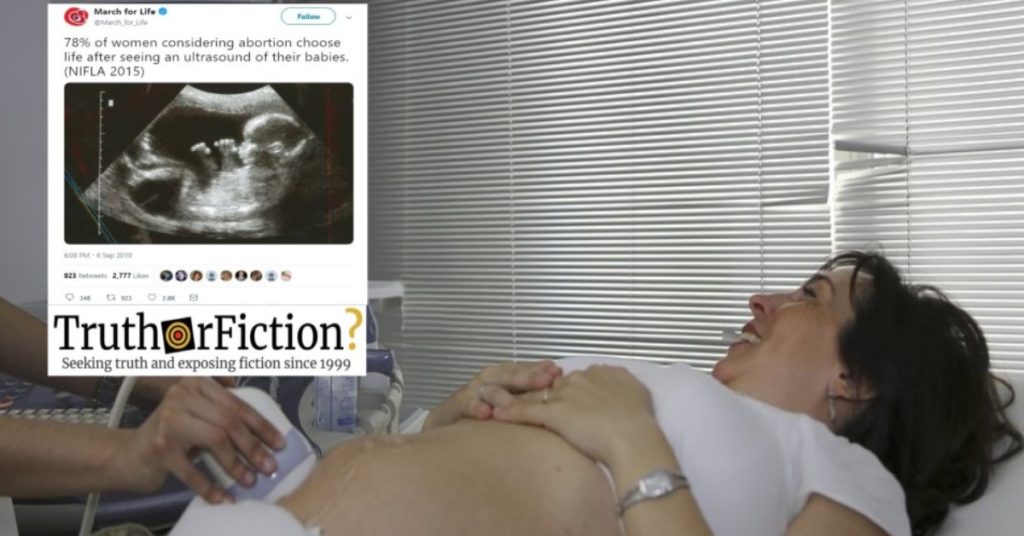A September 2019 claim by the anti-abortion group “March For Life” was exposed to online scrutiny in February 2020.
The group claimed at the time that “78 percent of women considering abortion choose life after seeing an ultrasound of their babies.” It mentioned — but did not link to — NIFLA, the acronym for another advocacy group, the National Institute of Family and Life Advocates. The latter group is a network of “pregnancy centers.”
The statistic was taken from a 2015 press release that was covered in anti-abortion blogs:
Four-hundred and ten (410) of NIFLA’s medical membership (less than one-half) reported providing 75,318 ultrasound confirmations of pregnancy in 2013 on patients identified as either abortion-minded or abortion-vulnerable. Of these abortion at risk patients, 58,634 chose to carry to term, indicating that 78 percent of those mothers who saw an ultrasound image of their unborn child before deciding about abortion chose life.
A post rebuking the group’s claim on Twitter was shared more than 7,000 times and highlighted more than 30,000 times on the platform.
“Only 1.6 percent who viewed their ultrasound ultimately decided to continue their pregnancy in a peer reviewed study of 6,619 people,” the user wrote. Their source was a 2014 study published in the journal Obstetrics & Gynecology using data drawn from 15,575 visits to a Planned Parenthood center in Los Angeles in 2011. According to the study:
Patients opted to view the ultrasound image 42.5 percent of the time. Nearly all pregnancies (98.8 percent) were terminated: 98.4 percent of pregnancies among women who viewed their ultrasound images and 99.0 percent of pregnancies among the patients who did not. Among women with high decision certainty, viewing was not associated with deciding to continue the pregnancy. Viewing was significantly associated with deciding to continue the pregnancy only among the 7.4 percent of women who reported medium or low decision certainty about having an abortion (adjusted odds ratio 3.21, 95 percent confidence interval 1.18–8.73).
NIFLA drew national attention in June 2018, when the Supreme Court ruled that a California law mandating that “pregnancy centers” post notices telling clients that contraception and abortion programs are available either free or for a low cost through public programs violated the centers’ First Amendment rights.
But a March 2018 report published in the journal of ethics for the American Medical Association (AMA) in March 2018 warned health providers to beware of centers’ “propagation of misinformation”:
These centers might tell women they have “plenty of time” to get an abortion, they could delay access to abortion, which could lead to women missing the gestational age cut-off for abortion in a given state; expose women to more involved and slightly riskier procedures at higher gestational ages; or cause women to miss the opportunity for abortion altogether. [Also], false or misleading information about contraception, condoms, and abortion could lead to unnecessary anxiety or failure to use measures that protect against sexually transmitted infections.
Because the numbers from peer-reviewed studies back up the second assertion and we were unable to find any supporting the first, we rate the claim Not True.

